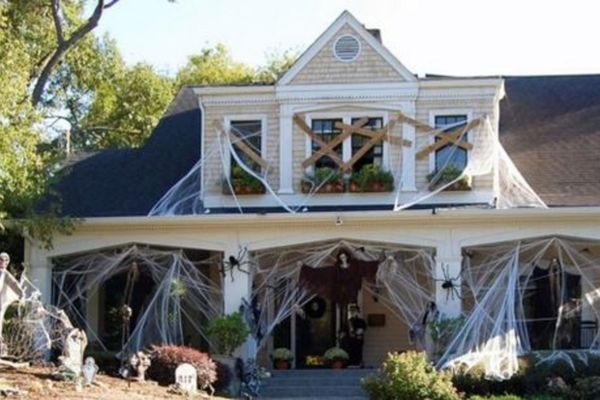Create a haunted house
Build a small haunted house diorama using cardboard, safe LED lights, paper cutouts, and simple mechanisms to explore design, storytelling, and basic circuits.



Step-by-step guide to build a haunted house diorama
Ultimate Guide to Building a Creative DIY Haunted House (Step-by-Step Tutorial)
Step 1
Gather all your materials and clear a workspace so you have room to build.
Step 2
With adult help cut off one long side of the box to make an open-front diorama stage.
Step 3
Measure the inside back and floor of the box with your ruler and pencil then cut black construction paper to fit.
Step 4
Glue the black paper inside the box to line the back and floor for a spooky night sky.
Step 5
Draw ghosts trees and bats on colored paper then cut them out to make scene pieces.
Step 6
Glue your paper cutouts into the box to arrange your haunted scene.
Step 7
Make a moving ghost by taping a ghost cutout to a straw then cut a slit in the top of the box and thread the straw through so you can push the ghost in and out.
Step 8
Stick two parallel strips of copper tape on the floor of the box from back to front leaving a small gap by the front and mark one strip with a + for positive.
Step 9
Place the LED so each leg sits on a different copper strip and tape the legs down making sure the longer leg is on the + strip.
Step 10
Tape the coin cell to a small paper flap with the + side facing down so pressing the flap will press the coin onto the copper strips and complete the circuit.
Step 11
Position and tape the paper flap inside the box so pressing it closes the circuit and the LED lights; test and adjust until the light turns on when you press.
Step 12
Decorate the outside of your haunted house with coloring materials and extra cutouts to make it spooky and fun.
Step 13
Take a photo or video and share your finished haunted house diorama on DIY.org
Final steps
You're almost there! Complete all the steps, bring your creation to life, post it, and conquer the challenge!


Help!?
What can we use if we can't find copper tape or a coin cell?
If you can't find copper tape, press flat strips of aluminum foil onto the box floor as the conductive paths and swap the coin cell for a small AA battery in a holder or a stick-on button-cell LED module, making sure the LED legs still sit on different conductive strips as in the step 'Stick two parallel strips of copper tape'.
My LED won't light — what should I check or fix?
Check that the longer LED leg is taped to the strip you marked +, that both LED legs have firm contact with the copper (or foil) strips, and that the coin cell is taped with the + side facing down and presses fully against the strips when you press the paper flap as instructed.
How can I adapt this activity for younger kids or older kids?
For younger children, have an adult cut the box and slit and pre-cut the paper shapes and use a stick-on battery LED instead of building the copper tape circuit, while older kids can add extra LEDs, parallel copper-tape paths, and simple circuitry or microcontroller controls to make lights blink.
How can we extend or personalize the haunted house after finishing the basic instructions?
Extend the diorama by painting ghosts with glow-in-the-dark paint, adding colored cellophane over additional LEDs, cutting extra slits for more straw-operated moving cutouts, or adding a small buzzer triggered by the same paper-flap switch for spooky sound effects.
Watch videos on how to build a haunted house diorama
Elementary Art Haunted House Windows Collaborative Poster
Facts about diorama building and basic circuits
✂️ Papercraft can turn flat sheets into detailed 3D models just with folding, cutting, and glue—some artists build life-size paper sculptures!
🔋 A basic LED circuit can run on a single AA battery with one resistor and a couple of wires, making tiny electronics perfect for kid-friendly projects.
🖼️ Dioramas were popularized in museums in the 1800s to recreate lifelike scenes inside glass cases for storytelling and education.
👻 Haunted houses became popular public attractions in the 20th century and theme-park haunts can use hundreds of lights and effects to make spooky scenes.
💡 Light-emitting diodes (LEDs) use far less power than incandescent bulbs and can last up to tens of thousands of hours—great for safe, long-lasting model lighting.
How do you build a small haunted house diorama with lights and simple mechanisms?
What materials and tools do I need to make the haunted house diorama?
What ages is this haunted house diorama activity suitable for?
What safety tips should parents follow when making a lighted haunted house diorama?


One subscription, many ways to play and learn.
Only $6.99 after trial. No credit card required


